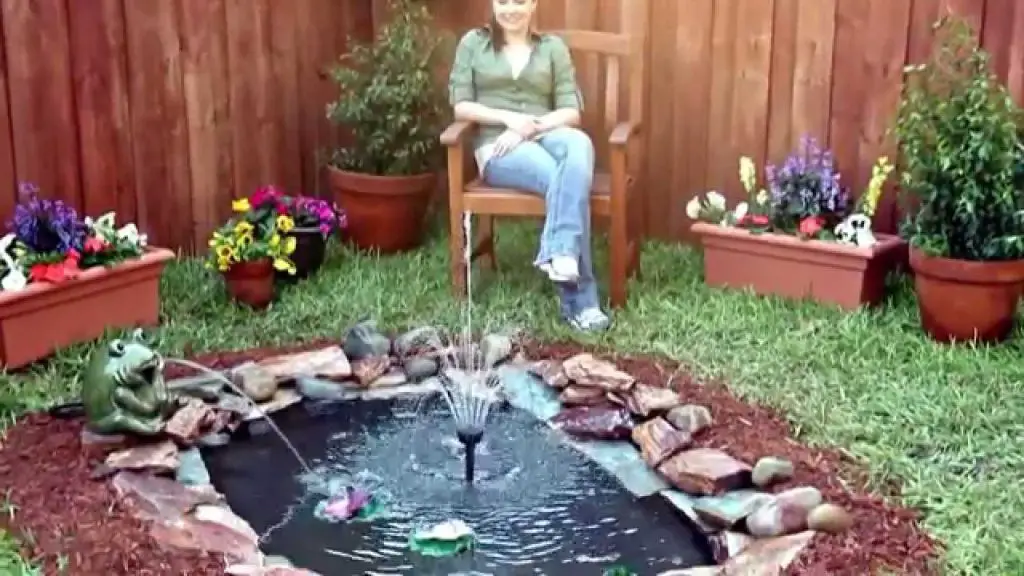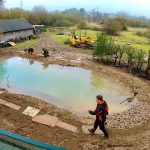Building a little pond in your backyard can be a rewarding and relaxing project. Not only does it add a touch of natural beauty to your outdoor space, but it also creates a habitat for wildlife and provides a tranquil environment for you to enjoy. Whether you’re a seasoned gardener or a novice DIY enthusiast, creating a little pond is a manageable and fulfilling endeavor that can be achieved with the right guidance and a bit of creativity.
Choosing the Location
The first step in building a little pond is to carefully select the location. Look for an area in your yard that receives a good amount of sunlight and is relatively level. Keep in mind that you’ll want to be able to see and enjoy the pond from your home, so consider the views from different vantage points. Additionally, be mindful of any overhead trees or shrubs that could drop leaves or debris into the pond.
Designing the Pond
Once you’ve chosen the location, it’s time to decide on the size and shape of your little pond. Consider the available space and how you envision the pond fitting into your overall landscape. A simple circular or oval shape often works well for small ponds, but feel free to get creative with unique shapes to suit your personal style.
Gathering Materials
Before you start digging, gather the necessary materials for your little pond. You’ll need a pond liner, which can be made of rubber or preformed plastic, as well as a pump and filter to keep the water clean and circulating. Additionally, you may want to include rocks, gravel, and aquatic plants to enhance the aesthetic and ecological value of the pond.
Excavating the Area
Once you have your materials ready, it’s time to start digging. Use a rope or hose to outline the shape of the pond, and then carefully excavate the area to the desired depth. Keep in mind that the depth of your pond will depend on the types of plants and wildlife you plan to include. A depth of at least 18-24 inches is generally recommended to support a healthy ecosystem.
Installing the Liner
How to install a liner? After the excavation is complete, carefully place the pond liner into the hole, making sure to smooth out any wrinkles or folds. The liner should extend beyond the edges of the pond to allow for secure anchoring. Trim any excess liner, leaving a few inches of overhang to ensure a secure fit.
Adding the Water and Filtration
With the liner in place, it’s time to fill the pond with water. Use a garden hose to slowly fill the pond, taking care to avoid disturbing the liner. Once the pond is filled, install the pump and filter according to the manufacturer’s instructions. A well-functioning filtration system is essential for maintaining clear and healthy water in your little pond.
Adding Rocks and Plants
To enhance the natural look of your little pond, consider adding rocks and aquatic plants around the edges. Rocks can be used to create a waterfall or to border the pond, while aquatic plants such as water lilies, lotus, and water hyacinth can provide shade, oxygenate the water, and offer habitat for small aquatic creatures.
Maintaining the Pond
How to maintain a pond? After your little pond is built, it’s important to establish a maintenance routine to keep it healthy and thriving. Regular tasks may include removing debris, trimming plants, and checking the pump and filter for optimal performance. Additionally, you’ll want to monitor the water quality and make adjustments as needed to ensure a balanced ecosystem.
Attracting Wildlife
One of the most rewarding aspects of having a little pond is the opportunity to attract and observe wildlife. Birds, insects, and amphibians are likely to visit your pond, especially if you provide a variety of plants and shallow areas for them to access. Creating a welcoming environment for wildlife adds another layer of enjoyment to your little pond.
Enjoying Your Little Pond
Once your little pond is complete and thriving, take the time to sit back, relax, and enjoy the peaceful atmosphere it brings to your outdoor space. Whether you’re reading a book, sipping a cup of tea, or simply taking in the sights and sounds of nature, your little pond can become a cherished sanctuary for relaxation and contemplation.
In conclusion, building a little pond is a wonderful way to enhance your backyard and connect with nature. With careful planning and attention to detail, you can create a beautiful and sustainable habitat that provides endless enjoyment for you and your local wildlife. So, roll up your sleeves, gather your materials, and get ready to embark on a fulfilling journey of building your very own little pond.





